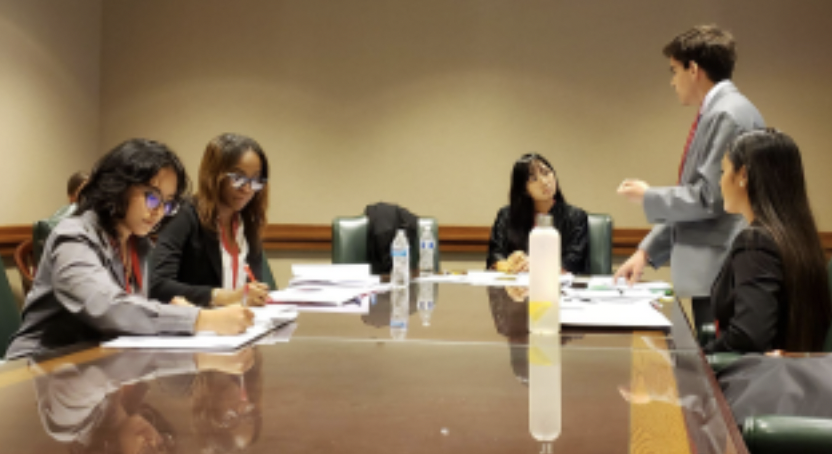Youth and Government, is a competition meant to bestow experience through a mock representation of the ins and outs of the Texas government. The statewide organization is split into sections inside both the Judicial and Legislative branches of government: Trial court, State Affairs Forum, Appellate Court, the Legislative Sector, and our very own Media team. Often coming into Youth and Government as a new delegate, it gets confusing and it is important that we know how each of the sections work.
Media is our journalistic section that, through stories, videos, and posts, spreads out across the entire conference, presenting the opportunity to interact with many delegates of all sections. Broadcast media allows delegates to record interviews, report live news stories, and make videos about the conference. Social Media creates posts across social media platforms focusing on any angle they want to cover and write about from the conference. Print Media writes news stories and articles that are posted to a blog. Photo Media (Photojournalism), takes the most pictures for their stories, posting on social platforms and creating a photo essay that tells a story through a mixture of pictures and captions. All of Media works together in similar ways, whether reporting live or writing stories ahead of time.
Trial court, one of Youth and Government’s most popular sections, is split between both District and County Court. District court follows a similar process to court cases we see outside of this competition. One of the court cases being used this weekend, “It’s All Guicci”, focuses on Dominico de Sole’s prosecution of Art Fraud against Ann Freedman, a real-world past case. The delegates in District court substitute each of the players in this case, and practice in their own interpretation and questions to the best of their ability. This involves witnesses, a bailiff, the prosecution and defense attorney, and the honorable Judge. County court is very similar to District court, and they are currently working on the same case!

Vergara discusses his request for change in the Appellate court. From right to left see: Jessica Ibarra, Laila George, Victoria Cao, Julio Vergara, and Sofia Alaniz (Appellate Court).
In State Affairs, the delegates are focused on proposals. These proposals are suggested solutions or improvements that the delegates come up with for current problems that are happening in the real world. After a duo of delegates open with their proposal, anyone can stand to ask clarification and questions regarding the proposal. These help delegates decide whether or not to vote in favor of these proposals. After the time allotted for questions and answers, selected delegates from the committee speak as either proponents or opponents for the proposal being discussed. This is when the selected speakers attempt to convince the committee to support the proposal or speak against it.
Appellate court, or the appeals court, is sent the decisions made by the trial court about their cases. In this court, the delegates standing in as Appellants, Appellees, and the Judge review the official decisions and have the opportunity here to request changes to the decision. These requests are discussed between the Appellants and Appellees until final adjustments to the decision are approved. In an interview with Jessica Ibarra, an attorney on the appellate court, she explains that, “after a case from trial court that has gone through completely, we argue specifics.” They deep dive into the ins and outs of the court’s decision. Ibarra loves appellate, mentioning that, “it’s actually very intellectual and you have to make up arguments…and understand case law in a deeper sense.” Despite it being her first year participating in appellate court, she has a true understanding for what it takes to perform the best she can.
Similarly to Trial Court, the legislative section is also split into two sections: the House and the Senate, just like the system in the U.S. In the legislative section, the teams focus on proposing and amending bills to pass. Both the Senate and the House take bills that have been passed by the committee, and are heard by the two chambers. They are then assessed and adjusted to either be blocked or passed on to the Governor. Delegates have the opportunity to debate the bill, propose amendments, check for clarification, and speak for or against the bill.
All of these sections are unique to themselves, and interwork with each other in an amazing way. Even with these explanations, the best way to understand even better is through seeing and experiencing it yourself. It’s an unforgettable experience, and is a straightforward representation of our government today.
Written by: LeeAnn Martin
